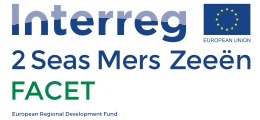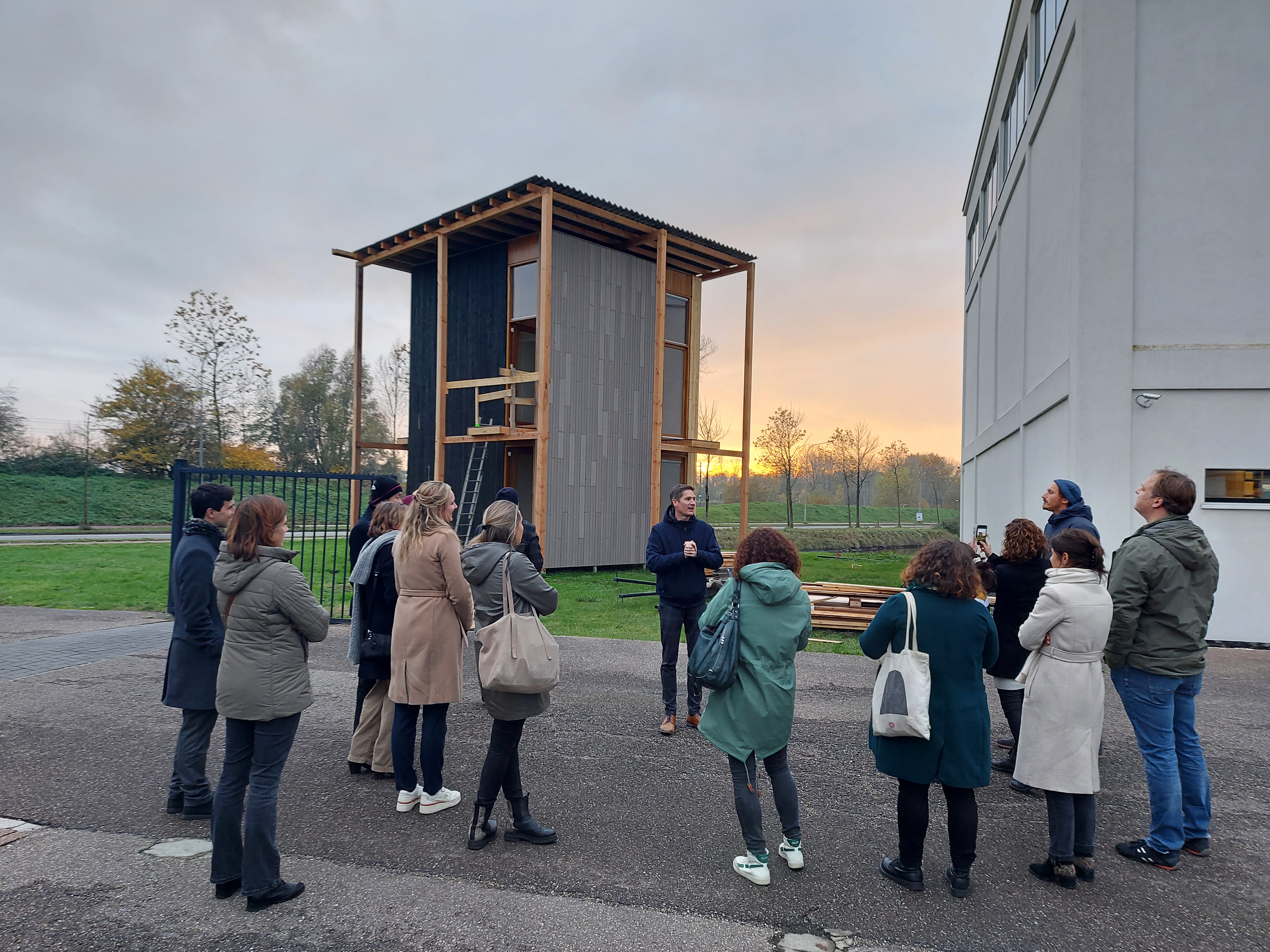The Biobased Beleven building is a special eye-catcher on the site at the Kleverkerkseweg in Middelburg. It is circularly built with as many biobased materials as possible. The two-story building officially opened in November, but that does not mean it is finished. "This is a living lab. We continue to develop it. Here you see what is possible with biobased materials," said Maarten de Hollander, lecturer in architecture and researcher in the Biobased Building research group at HZ University of Applied Sciences.
The desire to make such a building had long been there at HZ. Former board chairman Adri de Buck and architect Ben Westenburger raised the idea years ago. Students from the Architecture programme at the time made several designs for such a building. The research group Biobased Building went ahead with it, but did not raise enough money for construction. It seemed to vanish at the time, but the Interreg 2 Seas project FACET gave it a second life. FACET examined how to encourage entrepreneurs in the tourism sector to apply circular and biobased solutions in their businesses, thus creating new business models. All partners, including the Biobased Construction research group and HZ Knowledge Center Coastal Tourism, did this through innovations, new tools and demonstration projects around circular construction, sustainable packaging and waste reduction.
Long run-up
The circularly built dike chalets at De Paardenkreek campsite in Kortgene are an appealing example, but Biobased Beleven certainly falls into this category as well. "FACET brought a solution," Maarten den Hollander says of the second chance for the project. "We again asked if architecture students wanted to design a building, slightly smaller than the previous one."
The students' design and technical drawings were fine-tuned and developed by architects Taco Tuinhof of Rothuizen Architects and Advisors and his colleague Derk Thijs of Thijs + Gutberlet, both of whom have offices on the site at the Kleverkerkseweg and want to redevelop it in a sustainable way. Their designs went to the municipality for the necessary permits. Just after the summer, the permits were granted. "The preparation took a total of more than a year and a half. We pressed play in early September and a month later there was already a building on the site. That's how it is with most construction projects. You have a long run-up, but once it's up and running, it goes fast."
Den Hollander is proud of the result. The building consists of two floors. On the first floor you will find a space that will be set up as an information and exhibition area. Visitors there should be able to learn about biobased building and see new materials and applications. On the second floor, which you reach via a wooden staircase yet to be built on the outside, there will be a studio with a sleeping and living area, kitchenette and bathroom. This is where tourists can stay. "The main goal of the project is to introduce entrepreneurs in the tourism sector to circularity and bio-based materials. We do that on the first floor, but such an entrepreneur is also welcome to stay overnight to experience what it's like."
Being honest
Because of time, the partners were not able to use all the materials they wanted to use. "But we are honest about that," Den Hollander explains. "Had we had more time, been able to test more materials, fine-tune things and approach manufacturers, we would have succeeded." For example, osb boards have now been used. These are made from residual material, but still require a chemical agent to press the material back into a board. "You have variants that are completely biobased, but by law you are not yet allowed to use these in structural elements. So then it stops. Another pitfall is that the availability of materials fluctuates. Here, for example, the external staircase is still missing. The material for it was not yet available. You have to accept that, just like other things. You sometimes have color differences in wall panels, for example, because you are working with leftover materials. That takes getting used to, but also something you can play with."
Of all building materials worldwide, 2.0 percent are currently biobased. Of that, by far the most, about 1.9 percent, is wood. "The 0.1 percent that remains are the products we want to showcase here. The pioneers should be able to have their materials tested." These include products made of mycelium (a network of fungal threads), composites (materials composed of multiple, natural elements) and regional products made of flax, straw and mussel shells, for example. "Here, manufacturers can test those kinds of products. Let the rain and sun exert their influence on them."
Stringent requirements
In existing or new construction houses, manufacturers cannot test such products because of strict requirements for building materials. "After all, no one wants a leak, even after twenty acres. On the one hand this is good, but on the other hand it also inhibits progress." Biobased Experience gives manufacturers room to experiment. "Mistakes are allowed here. That's just fine, because we learn from that. It is the purpose of a living lab."
Besides the right products, the right people are especially important. "What we have done here is not rocket science, but it only works if you have the right people around you: builders and manufacturers who believe in it, think along and are flexible. Then it succeeds. It's not that hard, maybe not harder at all than conventional building. We have to get that message across. Biobased Experience is going to help us do that."
FACET
The Interreg 2 Seas project FACET aims to encourage entrepreneurs in the tourism sector to apply circular solutions within their businesses so that new sustainable business models emerge. With project partners from Belgium, the Netherlands, France and England, circular applications were experimented with in the areas of accommodations, waste reduction, packaging, energy, water and joint purchasing. FACET was made possible by funding from the Interreg 2 Seas program 2014-2020 and co-funded by the European Regional Development Fund.

